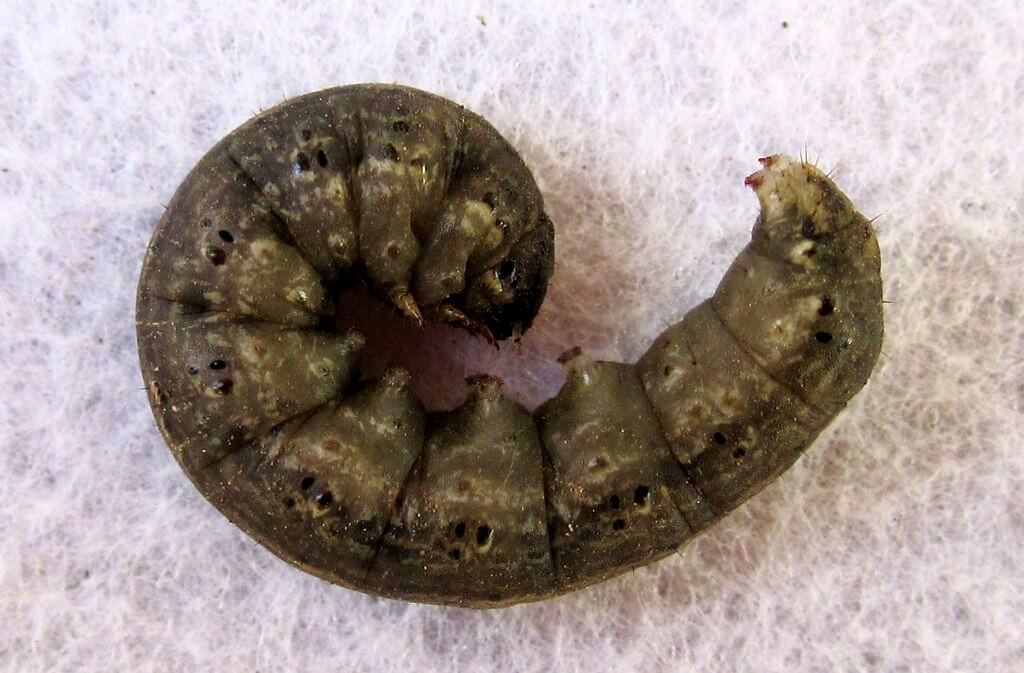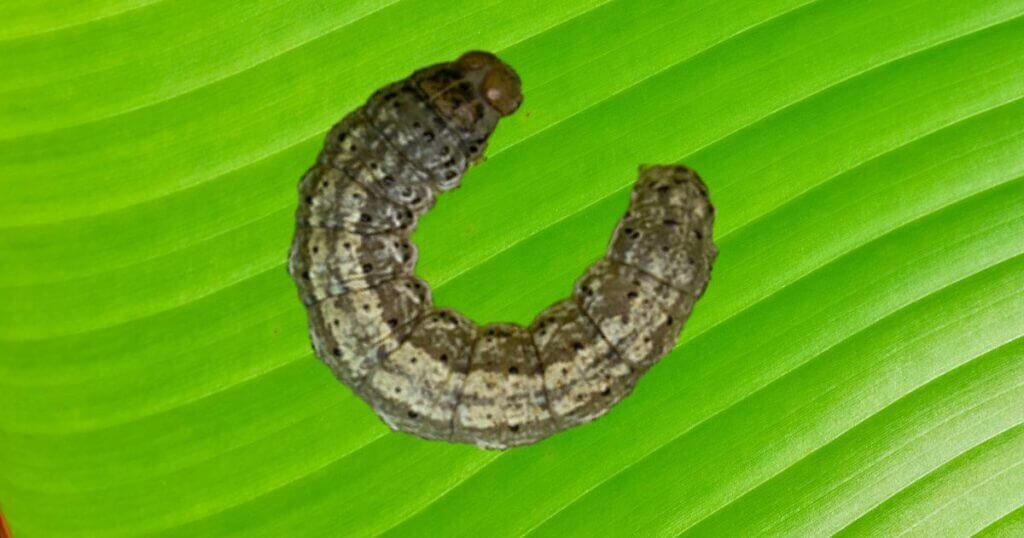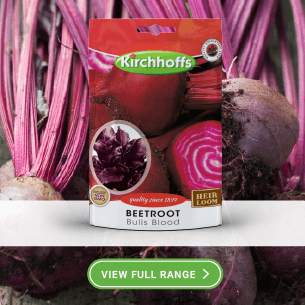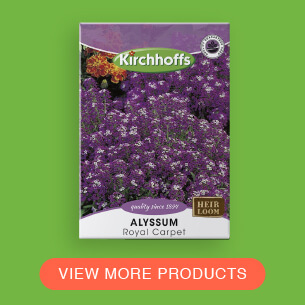Unseen Pests, Visible Damage: Cutworms in The Garden and On The Lawn
Paches on your lawn or seedlings cut off at the base? it’s probably cutworms…
Ah, the joys of gardening and lawn care, right? You put in all this effort to create a lovely outdoor space, only to find it under siege by those pesky cutworms. These little critters, lurking just out of sight, have quite the appetite for our beloved plants and lush lawns. It’s like one day, everything’s looking perfect, and the next, you’re left wondering who invited the tiny terrors to the feast.
But hey, don’t let it get you down. We’ve all been there, and guess what? There’s plenty we can do to show these cutworms that they’re not welcome. It’s all about getting to know your enemy, right? So, these cutworms, they’re basically the night-owl toddlers of the insect world, munching away at the stems of young plants and leaving behind their signature mess in our lawns.
Now, the good news is that getting rid of them isn’t as daunting as it might seem. It’s a bit like putting together a puzzle – a combination of preventive steps, a few clever tricks up your sleeve, and maybe even some help from Mother Nature herself. I’m talking about encouraging those natural predators, maybe setting up some barriers, and if necessary, knowing which remedies to use without turning your garden into a chemical warzone.
So, let’s roll up our sleeves and tackle this together. With a bit of know-how and some garden savvy, we’ll have your outdoor space back to its glorious self in no time. And who knows? You might even enjoy the challenge. After all, what’s a garden without a little adventure?
Understanding Cutworms
Cutworms are not a single species but a group of moth larvae that share similar destructive feeding habits. These pests are adept at hiding during the day and emerging at night to feed, making them particularly insidious. Their preference for the tender stems of young plants and grass makes gardens and lawns prime targets for their nightly raids.
The Damage Cutworms Cause to Gardens and Lawns
In gardens, cutworms are infamous for their “cutting” behavior. They typically feed at or just below the soil surface, gnawing through plant stems, which can sever young seedlings at the base. This damage often results in wilted or completely flattened plants, sometimes overnight, leaving gardeners baffled and frustrated. The impact is not just aesthetic; it can significantly reduce yields in vegetable gardens and disrupt the growth of ornamental plants.
Lawns are not immune to cutworm activity. These pests can chew through grass blades close to the roots, creating patches of dead or stunted grass that mar the lawn’s appearance. The damage can be widespread, leading to unsightly lawns that require considerable effort and resources to restore.
How to Find Cutworms and Identifying Cutworm Damage
Identifying cutworm damage involves looking for their characteristic signs: plants cut at the base, irregular holes in leaves, and bare patches in lawns. At night, a flashlight inspection can reveal cutworms actively feeding, confirming their presence and the source of the damage.
How to Get Rid of Cutworms
The key to managing cutworms lies in early detection and adopting an integrated approach to pest control. Combining cultural practices, physical barriers, biological control agents, and, when necessary, chemical treatments can help protect your garden and lawn from cutworm damage.
Organic and Natural Ways to Control Cutworms
Physical and Mechanical Barriers
Creating physical barriers around vulnerable plants can protect them from cutworms. Collars made from cardboard, plastic, or metal placed around the plant base can prevent cutworms from reaching the stems. This is a good tactic tp protect seedlings from Cutworms. Similarly, maintaining a well-aerated and healthy lawn can discourage cutworms from settling in.
Biological Control: Nature’s Predators
Encouraging or introducing natural predators, such as birds, ground beetles, and parasitic wasps, can help control cutworm populations. These beneficial organisms naturally regulate cutworm numbers, contributing to the overall health of the garden ecosystem.
As A Last Resort Try These Products To Get Rid of Cutworms
When cutworm damage is severe, and other methods are insufficient, targeted chemical interventions may be necessary.
When it comes to defending your garden against cutworms, having the right arsenal at your disposal can make all the difference. Let’s chat about a few products that could be just the allies you need in this battle:
Efekto Cutworm Bait
Efekto Cutworm Bait is like having a secret agent in your garden. This cleverly designed bait targets those sneaky cutworms, enticing them with something they can’t resist. Once they take the bait, it’s game over for them, but your plants will thank you. It’s easy to use, and because it’s so targeted, you won’t have to worry about widespread impact on your garden’s ecosystem. A great choice if you’re looking for a solution that’s both effective and straightforward.
Protek Cutworm Bait
Think of Protek Cutworm Bait as your garden’s personal bodyguard. This bait not only lures cutworms away from your precious plants but also deals with them efficiently once they’ve taken the bait. It’s formulated to be enticing to cutworms while being easy for you to apply around your plants. With Protek, you’re not just protecting your current plants; you’re ensuring the safety of future plantings as well.
Kombat Cutworm Bait
Kombat cutworm bait packs a punch, just like its name suggests. Designed to knock out cutworms effectively, this bait works by attracting the pests with a tempting treat, then delivering a knockout blow. It’s a great option if you’re dealing with a persistent cutworm problem and need a strong solution. Plus, its ease of use means you won’t have to spend too much time worrying about application, letting you get back to the more enjoyable parts of gardening.
Each of these products offers a unique approach to managing cutworms, so you can choose the one that best fits your garden’s needs and your personal gardening style. Remember, the best defense is a good offense, and with these baits, you’re well-equipped to keep those cutworms at bay.

How To Recover From Cutworm Infestation:
Bouncing back from a cutworm invasion is not just about repairing the damage but also setting up a fortress to guard against future attacks. It’s about turning a setback into a comeback story for your garden and lawn. The first step? Rolling up your sleeves and replanting those areas that took a hit. It might feel like you’re starting from scratch, but think of it as a new chapter, an opportunity to maybe try something different or to reinforce what you’ve already begun.
But here’s the key: restoration isn’t just about putting new plants in the ground. It’s about weaving a safety net through consistent monitoring and smart gardening practices. Keeping an eye on your garden, being vigilant for the early signs of cutworm activity, can make all the difference. It’s like being on neighborhood watch, but for your plants.
And let’s talk about the foundation of any great garden or lawn: diversity. Embracing a variety of plants not only creates a vibrant, eye-catching space but also fosters a robust ecosystem. Biodiversity is your garden’s best friend, attracting beneficial insects and creating a more resilient environment. It’s like having your own garden army, ready to defend against invaders like cutworms.
Incorporating healthy cultural practices into your routine is like giving your garden a shield. Crop rotation, proper watering, and soil management are all part of this arsenal, creating conditions that are less inviting to cutworms and more conducive to plant health.
The journey of restoration and recovery is a testament to the resilience of nature and the gardener’s spirit. With each step taken to revive your garden and lawn, you’re not just rebuilding; you’re fortifying, ensuring that your green oasis stands stronger and more beautiful than ever against the challenges it may face.
Cutworm Q and A:
Popular Questions About How To Get Rid Of Cutworms
How do you get rid of cutworms in South Africa?
To get rid of cutworms in South Africa, gardeners often employ a combination of methods for effective control. Cultural practices such as tilling the soil to expose cutworm larvae and removing plant debris to reduce hiding spots are foundational steps. Biological control using natural predators like birds and beneficial insects can also be effective. Additionally, applying diatomaceous earth around plant stems or using specific cutworm baits and insecticides registered for use in South Africa can provide direct control measures to protect plants from cutworm damage.
How do you control cut worms?
Controlling cutworms involves an integrated approach. Start by maintaining a clean garden free of weeds and debris to minimize their habitat. Utilize physical barriers like cardboard collars around the base of plants to protect them. Encourage or introduce natural predators into your garden, such as birds and beneficial insects. For severe infestations, consider applying appropriate insecticides or homemade remedies like a mixture of water and soap. Regular monitoring and prompt action upon the first sign of damage are crucial for effective cutworm control.
What is the best insecticide for cutworms?
The best insecticide for cutworms is one that is specifically labeled for their control and is suited to the particular plants you’re treating. Products containing bacillus thuringiensis (Bt), a natural soil-dwelling bacterium, are effective and environmentally friendly options. Chemical options like pyrethroids can also be effective but should be used as a last resort due to their broader environmental impact. Always follow the manufacturer’s instructions for application to ensure safety and effectiveness.
How does cutworm bait work?
Cutworm bait works by attracting cutworms with an appealing food source that is combined with a lethal insecticide. The bait is scattered on the soil surface near affected plants, where cutworms consume the bait particles during their nighttime feeding activities. The insecticide within the bait then poisons the cutworms, leading to their death. This method targets cutworms specifically, reducing the need for widespread pesticide application.
What is a cutworm a pest of?
Cutworms are a pest of a wide range of vegetable and ornamental plants. They are particularly notorious for damaging seedlings and young plants by cutting through the stems at ground level, often killing the plant. Cutworms can attack almost any garden plant but are especially fond of tender, newly planted vegetables such as beans, cabbage, carrots, and lettuce, as well as various flower seedlings.
Why do worms still live when cut in half?
Some types of worms, particularly earthworms, can survive and even regenerate to some extent when cut in half, depending on where the cut occurs. This is because their vital organs are repeated in each segment of their body. If the cut is behind the vital organs, the head portion of the worm may survive and regenerate the tail end. However, not all worms can survive such an injury, and the ability to regenerate varies significantly among different worm species.
What is the best plant insecticide?
The best plant insecticide is one that effectively targets the specific pests you’re dealing with while being safe for the plant and the environment. Neem oil is a versatile and organic option that works against a variety of pests and diseases. Insecticidal soaps are also effective against soft-bodied insects like aphids and spider mites. For more targeted control, products containing specific active ingredients like bacillus thuringiensis (Bt) can be used against caterpillars and other larval pests.
What is the best used for applying insecticides?
The best method for applying insecticides depends on the product’s formulation and the area being treated. Handheld spray bottles or garden sprayers are ideal for small to medium areas, allowing for precise application. For larger gardens or fields, a backpack sprayer or even a tractor-mounted sprayer might be necessary. Always ensure even coverage and follow the insecticide’s label instructions for the most effective and safe application.
What time of year are cutworms most active?
Cutworms are most active in the spring and early summer when temperatures begin to rise. This is when overwintered larvae start feeding voraciously before pupating into moths. Gardeners should be especially vigilant during these months, monitoring for signs of cutworm damage and taking preventive measures to protect young plants and seedlings from these nocturnal pests.
How do you identify cutworms?
Cutworms can be identified by their smooth, caterpillar-like bodies, which range in color from grey to brown, and are often found curled up in the soil near the base of damaged plants. They are mostly nocturnal, so you might not see them during the day. Signs of cutworm damage include seedlings cut off at soil level and notches or holes in the stems and leaves of more mature plants.
What is common cutworm?
The common cutworm (Agrotis ipsilon) is a widespread pest that targets a variety of vegetable and ornamental plants. These caterpillars are known for their destructive feeding habits, cutting down young plants at or just below the soil surface during the night. The larvae are typically grey or brown and can be identified by their smooth, plump bodies and the characteristic way they curl into a C-shape when disturbed.
Want To Know More About Cutworms?
Try these resources:
How to Get Rid of Snails in Your Garden – A Comprehensive Guide: This guide from Gardening.co.za offers detailed strategies to manage and eliminate snails from your garden, providing an eco-friendly approach to protect your plants. While not specifically about cutworms, understanding pest control can be beneficial for overall garden health. Read more here.
Insect Science – Cutworm: Insect Science provides an in-depth look at Agrotis segetum, a common cutworm species, detailing its lifecycle, behavior, and the threat it poses to crops. This resource is invaluable for identifying and understanding the enemy in your garden. Explore further.
Life is a Garden – Cutting Out Cutworms: Life is a Garden offers practical advice on identifying, preventing, and controlling cutworms in your garden. The article emphasizes non-chemical interventions, making it a great resource for organic gardeners. Learn more here.
Kombat – Cutworm Alert: Kombat provides a timely alert about cutworms, highlighting their destructive potential in gardens and on crops. The article offers solutions for cutworm control, helping gardeners protect their plants. Read the alert.
GrowVeg – Cutworm (Turnip Moth): GrowVeg focuses on the cutworm, also known as the turnip moth, offering insights into its behavior and the damage it can cause. The guide is tailored for UK and European gardeners but is broadly applicable. Discover more.
Gardening Eden – Plant Guide: Cutworms: Gardening Eden’s plant guide provides an overview of cutworms, including their lifecycle and the signs of their presence. It also offers tips for natural and chemical control methods. Check out the guide.
An Introduction to Pesticides – Plantinfo: This article serves as a foundational guide to understanding pesticides, their types, uses, and the importance of choosing the right product for specific garden problems. It emphasizes the role of pesticides in maintaining plant health and provides insights into integrated pest management strategies. A must-read for gardeners looking to get a comprehensive overview of pesticide use. Explore the introduction.
Applying Pesticides – Plantinfo: Following up on the basics, this piece dives into the practical aspects of pesticide application, offering step-by-step guidance to ensure effectiveness and safety. It covers critical topics such as timing, dosage, application techniques, and personal safety measures. This article is particularly useful for gardeners seeking to apply pesticides responsibly and effectively in their gardens. Learn about applying pesticides.








































